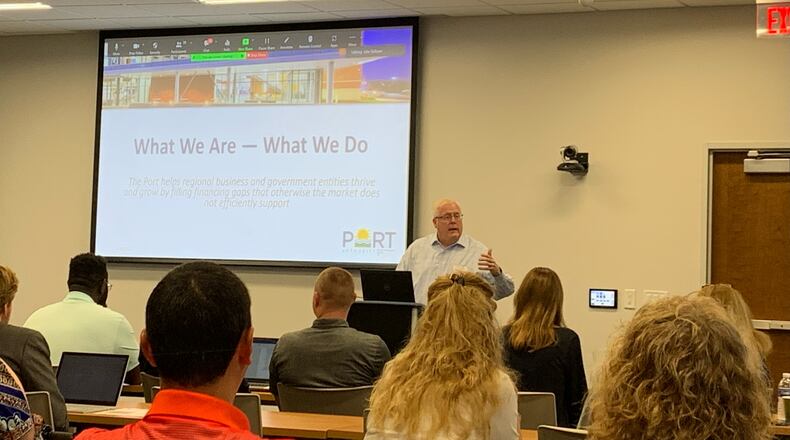The five-year Dayton Region CEDS, finalized in June, sets economic development priorities, strategies for achieving them, and an evaluation framework for Auglaize, Butler, Champaign, Clark, Clinton, Darke, Greene, Mercer, Miami, Montgomery, Preble, Shelby and Warren counties. For the first time it includes equity and inclusiveness goals for each regional economic priority.
Heinz joined local and federal officials on Tuesday at a workshop held at the Dayton Development Coalition’s office to talk about ways to obtain federal and state funding.
The workshop targeted local government leaders, educators, economic development organizations, workforce development organizations and non-profits. About 100 people attended in person or online.
“We know the process for funding projects can be complex and confusing. There are dozens of programs available with different rules and requirements, and we do our best to keep our community partners up-to-date,” said Julie Sullivan, the coalition’s executive vice president of regional development.
She encouraged community leaders to contact the coalition or the Miami Valley Regional Planning Commission, which co-authored the CEDS in partnership with the EDA and with community input, to see whether projects in their community may qualify for funding.
Workshop speakers also discussed grants or loans available through the U.S. Department of Agriculture, the Dayton-Montgomery County Port Authority and JobsOhio, the state’s privatized economic development arm.
“We want our communities to be able to leverage these resources to support economic development,” Sullivan said.
EDA grant applicants are more likely to get funding if their projects fit the CEDS, which Sullivan called the region’s economic development “roadmap.”
The EDA funding is designed to help distressed communities, those that have had major job losses or a natural disaster, Heinz said. It funds Opportunity Zone projects, economic development planning and infrastructure, and awarded money from the CARES Act and the American Rescue Plan.
The Dayton region received EDA funding after the 2019 tornadoes and most recently EDA awarded Central State University $3.6 million for a workforce training and business development center at its west Dayton campus.
“It’s a highly competitive process,” Heinz said, whose Chicago office covers a six-state region including Ohio. “We are looking at job creation, retention and investment.”
She said those seeking funding should look at the EDA website to see what kind of projects get funding, have matching funding ready to go and not ask for more than what is needed.
“What is your compelling story?” Heinz said. “It has to be all about job creation, investment and retention.”
The CEDS sets five regional priority areas:
- Workforce development and talent attraction and retention
- Infrastructure, including roads and bridges, water, sewer, energy and broadband
- Vibrant, diverse communities where people want to live and work
- Supporting small business and entrepreneurship
- A resilient, growing and diversified economy
Follow @LynnHulseyDDN on Twitter and Facebook
About the Author



